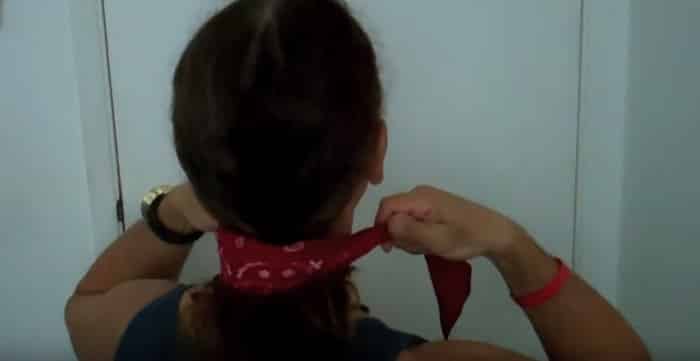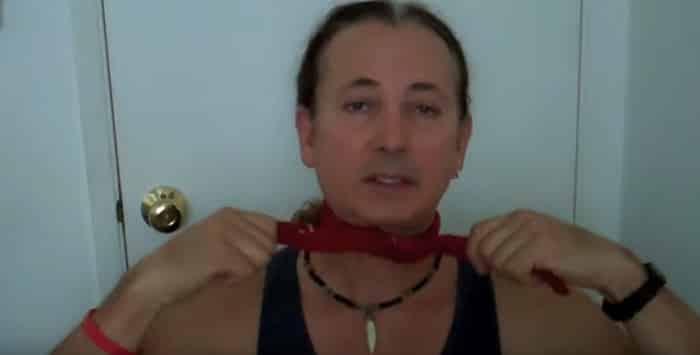There is nothing worse than arriving at the office with hair that looks like it has been dragged through a ditch. Here is our tutorial that explains how to avoid it.
Hello, fellow motorcycle riders. I just wanted to go through how to maintain your hairstyle while wearing a motorcycle helmet, especially when you have hair that is medium-length or longer.
In the past, people would just put it in a ponytail (braided hair), well, the problem with this is I’ve never known how to do a ponytail and to do a decent one, someone else has to do it for you.
If you don’t have a partner, you’re probably not going to mess with that. There are also things called hair gloves, which are these tubular things that have snaps on one side that you would throw your hair back and snap it inside this long tube.
The problem is those tubes still leave five to six inches of your hair hanging out the bottom, which is always going to flail in the wind and especially if you have long hair, which most women do.
Anything that flails in the wind is going to be all tangled up at the end of a few miles, so what are you supposed to do?
Other bike riders have taken hair bands and put them at various links in a ponytail. The problem with that is your hair tailors and gets thinner towards the ends.
The chances are your hair bands at the end are going to fall off on the road at some point, and then you’re going to have 6 inches of hair flailing around in the wind getting tangled.
Here’s what I do, and this works. It took me a while to figure this out, but it works with just a $1 bandana.
First of all, take your hair and throw it back as if you were going to put a band into your hair and put a hairband into your hair, something you probably do every time you put your motorcycle helmet on.
Now get yourself a $1 bandana roll the ends in together until you get an extended band, then place it below that hairband at the back of your head than in the front, tie it off like you would a shoe, but don’t go too tight.

Take the free ends and put one over and one under on the other side; this will make it where the wind resistance won’t loosen it.

At the back, your hair should be underneath the bandana being held down. Give your hair a few twists with your finger and wrap it under the bandana. This should stop the back of the hair flapping around in the wind when you are out on your bike.

This will last you 10 miles, a hundred miles, 200 miles; it doesn’t matter. If you have a cap or a half based helmet or a full-face helmet, this will hold forever. The best part is it will only take you about 30 seconds to do this.
Once you reach your destination, you can remove the bandana, and you are good to go. This takes seconds to do, and you will not experience one single tangle again on your motorcycle.
Some people prefer to wear a headscarf, which will cover more of the scalp of your head, so I thought I would include a short tutorial on how best to tie a headscarf.
How to Tie a Biker Head Scarf
For bikers, head style is for those that are out on the open road, and the main concern is keeping your hair out of your face, but just because you’re playing it safe does not mean that your style needs to go out the window.
First, bring the scarf up around the back of your head, and right above your brow line, this should create a triangle in the back.

You can then take both ends and tie it once and twice, and you’re ready for the open road and stylish for those of you with long hair. You will need to secure that as well; you may want to tie your hair back so that you stay stylish and safe.

Related Questions
Is Wearing A Motorcycle Helmet Bad For Your Hair?
Anyone who wears a helmet for long periods can have issues with their hair. It doesn’t matter if you are wearing your helmet for legal reasons like a motorcycle or you take part in a contact sport, prolonged wearing of a helmet can cause problems.
Traction Alopecia
Constant pulling or tension being put on your hair can cause damage to hair follicles over a period of time. This called traction alopecia.
Traction alopecia can often be seen in those who wear tight helmets or a bandana, hair braid, ponytails for prolonged periods.
This happens when someone wears a motorcycle helmet that is too tight for them. To avoid hair loss when wearing a motorcycle helmet, you must purchase the right size helmet for your shape of the head.
The constant pulling of your hair, especially from the roots, can cause permanent hair damage, so again, having the correct fitting helmet is very important.
One way to avoid this is too not tighten the helmet too much. Keep it tight enough so that if you had an accident, your helmet would still be tight enough not to fall off, but loose enough so that your hair follicles are not pulling all the time.
Bacteria from sweat can cause issues, especially if you live in a state like Florida, where the temperatures are a lot higher. Bacteria can build up chiefly in areas where you have the most padding, which can, over time, make your helmet a little smelly.
It’s essential to keep the interior of your helmet clean, so regular cleaning of your helmet interior is critical. There is an antibacterial solution available that you can use for the interior of your helmet after every ride.
I use Neutramist Helmet Sanitizer available from amazon . I find this to be good for those people who, like me, suffer from a sweaty head after riding.
. I find this to be good for those people who, like me, suffer from a sweaty head after riding.


